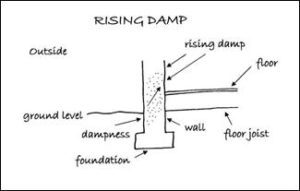Tuckpointing is a specialised brick finish, originally done in the early 1900’s to “hide” unevenly shaped bricks.
Instead of seeing bricks and mortar, the mortar is covered over by a darker coloured stain or base, and then a fine raised white line goes over the top. It is a very neat and attractive finish which can add a lot of value to homes when done well.
Tuckpointing can be done over new or old brickwork, or even over the top of render. Buildings which have been painted can also be tuckpointed. The paint or render can be stripped, or chiselled back, leaving exposed bricks which can then be restored and then tuckpointed. Another option (often cheaper but just as effective) for rendered buildings, is to tuckpoint over the top!
Repointing is also known as “Mortar Pointing” and “Mortar Re-Pointing”. They are all the same thing. Repointing is done when the mortar between the bricks is breaking down and “fretting” or decaying.
These two are often confused but are actually very different. Mortar Pointing or Re-Pointing means to repair the existing mortar joints. With Tuckpointing, you don’t actually see the mortar joints as they are stained over with a dark coloured base and then a fine white line protrudes over the top.
There are a couple of different ways this can be done: either with a hawk and trowel, or with a gun. Our qualified tradesmen use guns to inject the mortar between the bricks as this method has proven to give a superior finish and result to our clients.
Fretting is the decay or break-down of either mortar or bricks. This decay is caused by a number of factors, including weather, water, chemical reactions, inferior grade products etc.
The joint is the type of finish between the bricks. There are many of these which include: Flush, struck and cut, rolled, recessed, etc. If you’d like more information on this, just send us an enquiry!
Like there is a basketweave pattern in paving, so too you can have different patterns in bricklaying. Flemmish Bond is a pattern of laying bricks where the “stretcher” (longest length) and a “header” (shortest length) are laid alternately along the course of brickwork. There are many variations on this theme, all with different names.
This is an older style of rendering, popular around Federation era. This render is heavily texturised, often used in conjunction with tuckpointing.
It has small gravel added to give the finish a bubble-like effect and it’s finish is quite rough and “lumpy”. It is known both as Roughcast Render and also Stucco.
A lintel is a horizontal beam, used to give structural strength and support around openings such as doors and windows. Lintels can either consist of metal, concrete or wood – and all are subject to decay.
Metal lintels can rust and expand and cause the surrounding brickwork to crack, causing structural damage. Galvanised lintels are used to replace the rusting lintels which ensure the problem does not re-occur.

More Questions?
If you have any more questions please get in contact with one of our specialists!
